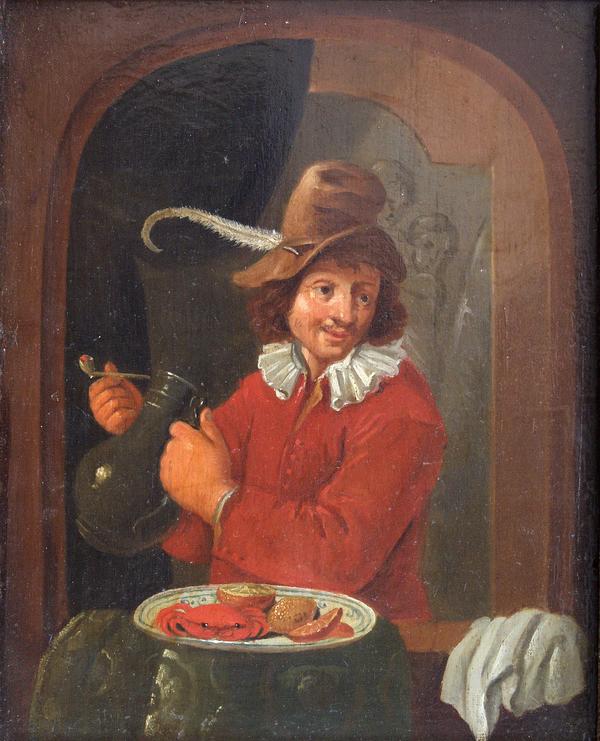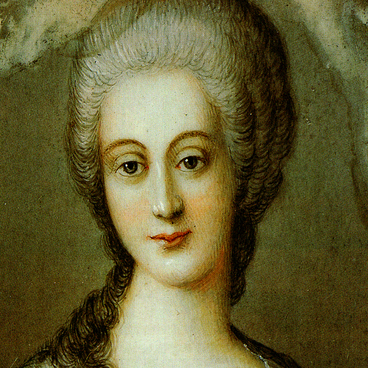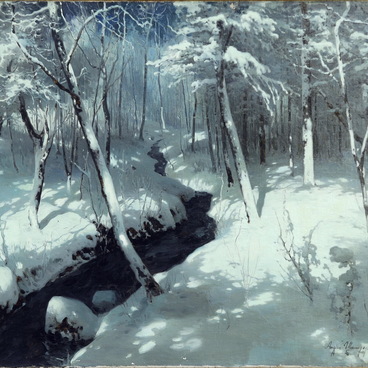The Smoking Man genre posed portrait was painted by an unknown Dutch artist in the 17th century. This period is usually called the Dutch Golden Age — according to researchers, about 3,000 artists worked at that time in the Netherlands.
Dutch masters were known for their mastery of drawing. Combining it with simple picturesque methods, they managed to raise genre portraits to a completely new technical level. In the history of art, it is customary to call those artists ‘the Lesser Dutchmen’ because of the unassuming plots and small size of paintings created for the modest interiors of the townspeople.
The Smoking Man is a classic example of the art of ‘the Lesser Dutchmen’. The man in the painting is painted in semantic and narrative interaction with the surrounding everyday items, architectural environment, in his common circumstances and conditions. There is a reason for The Smoking Man to be painted with oil paints on a wooden base: wood is a material prevailing in the 17th century, and the tradition of using it comes from the Middle Ages.
The chamber composition represents a Dutchman in traditional clothes — a velvet red camisole with a big white collar, a wide-brimmed hat with a high body and low wide fields. The hat is decorated with a white feather. It was as if the man had stopped for a moment talking to an invisible companion, and was ready to move away. We see a still-life painting — a large white serving dish with a crab and a few slices of lemon on it, and next to it, on the frame of the opening there is a napkin. The man has a smoking pipe and a large majolica jug in his hands — all of these are traditional attributes used by the Lesser Dutchmen to represent everyday life.
The artist uses the coulisse technique — the posing man is standing against an arch inside which there is an unfinished painting partially covered with dark drapery. The front edge of the painting is separated from the viewer by a conventional horizontal structure of a window sill-table with a patterned carpet and a serving dish on it. The artist delineated all the details carefully, with close attention, transferred the texture of the objects, emphasizing their materiality.
The simplicity of the plot, the everyday conventionalism and the traditional nature of the subject world are the hallmarks of genre portrait that requires no personalization. Dutch masters, having developed in 17th century all genre variations of a portrait known today have established such type of portrait — and it became a marker of the historical era.
Dutch masters were known for their mastery of drawing. Combining it with simple picturesque methods, they managed to raise genre portraits to a completely new technical level. In the history of art, it is customary to call those artists ‘the Lesser Dutchmen’ because of the unassuming plots and small size of paintings created for the modest interiors of the townspeople.
The Smoking Man is a classic example of the art of ‘the Lesser Dutchmen’. The man in the painting is painted in semantic and narrative interaction with the surrounding everyday items, architectural environment, in his common circumstances and conditions. There is a reason for The Smoking Man to be painted with oil paints on a wooden base: wood is a material prevailing in the 17th century, and the tradition of using it comes from the Middle Ages.
The chamber composition represents a Dutchman in traditional clothes — a velvet red camisole with a big white collar, a wide-brimmed hat with a high body and low wide fields. The hat is decorated with a white feather. It was as if the man had stopped for a moment talking to an invisible companion, and was ready to move away. We see a still-life painting — a large white serving dish with a crab and a few slices of lemon on it, and next to it, on the frame of the opening there is a napkin. The man has a smoking pipe and a large majolica jug in his hands — all of these are traditional attributes used by the Lesser Dutchmen to represent everyday life.
The artist uses the coulisse technique — the posing man is standing against an arch inside which there is an unfinished painting partially covered with dark drapery. The front edge of the painting is separated from the viewer by a conventional horizontal structure of a window sill-table with a patterned carpet and a serving dish on it. The artist delineated all the details carefully, with close attention, transferred the texture of the objects, emphasizing their materiality.
The simplicity of the plot, the everyday conventionalism and the traditional nature of the subject world are the hallmarks of genre portrait that requires no personalization. Dutch masters, having developed in 17th century all genre variations of a portrait known today have established such type of portrait — and it became a marker of the historical era.



